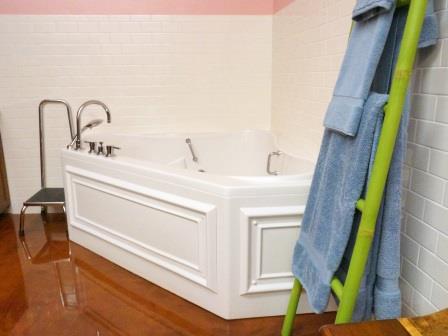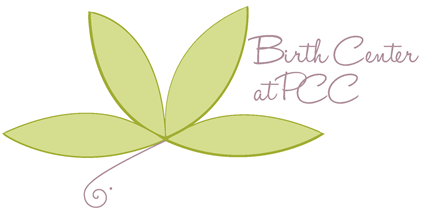Birth Centered Around You
Feeding your Baby
- Hits: 8380
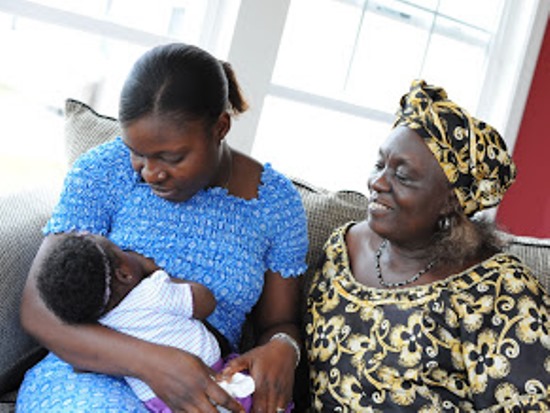 Breastfeeding
Breastfeeding
A breastfed baby may nurse every 1 to 3 hours. It is not uncommon for a breastfed baby to feed frequently in the evening. This is called cluster feeding. A breastfed baby will usually nurse more frequently than a formula-fed baby. Encourage your baby to stay on one side until the breast is emptied, typically at least 15-20 minutes, prior to offering the other side. It is not necessary to switch breasts at each feeding.
You can feed your baby when he or she shows signs of hunger; you do not need to use a clock to tell you when to feed your baby. Signs that your baby is hungry include:
- Smacking or licking lips
- Opening and closing mouth
- Sucking on lips, tongue, hands, fingers, toes, toys, or clothing
- Rooting around on the chest of whomever is carrying him or her
- Trying to position for nursing, either by lying back or pulling on your clothes
- Moving head side to side
- Fussing or crying
Care of your Breasts
Frequent nursing will provide the stimulation needed for a good milk supply. For sore nipples, you can rub a little milk or lanolin into your nipples after feeding then allow your nipples to air dry. You may choose to use disposable or washable breast pads if your breasts leak milk between feedings. Change these pads frequently. If you have excessive soreness or cracked nipples, call for help.
Usually, your milk will come in by the third day. If you are so full (engorged) that it is difficult for your baby to latch, hand-express just enough milk to soften the nipple for easier attachment. If you have difficulty getting baby to latch or if you are in pain, call your midwife. Flu-like symptoms, red tender bumps on your breast, or fever can be signs of an infection and you should inform your midwife.
Bottle-feeding
Bottle-fed babies need to eat every four hours. They should not go more than 6 hours between daytime feedings. By day three, you can feed 1 to 2 oz. per feeding. Newborns do not need to drink water. All babies should be burped after each feeding. However, some babies burp a lot, while others rarely need to. To burp, gently pat or rub your baby’s back while placed on your chest, over your shoulder, or on your lap, with head well-supported at the chin.
More resources
Safe Sleep
- Hits: 5978
Whether you choose to bed-share with your new baby or use a crib, safe sleep practices are important to keep your baby happy and safe as well as to prevent sudden infant death syndrome (SIDS). It is important for anyone who will be caring for your baby to know about safe sleep.
Regardless of whether you choose to bed share or use a crib, you should do the following to decrease the risk of SIDS.
- Breastfeeding is strongly associated with a decreased risk of SIDS.1
- Placing your baby on their back to sleep is strongly associated with a decreased risk of SIDS and accidental suffocation.1
- Do not smoke during your pregnancy or after the baby is born. Do not allow anyone to smoke around your baby. Babies exposed to cigarette smoke are at a higher risk of SIDS.1
If you choose to bed-share, these are a few safety guidelines to make your bed as safe as possible:
- Never leave your baby alone on an adult bed.
- Do not bed-share if your baby was premature.
- Never sleep on a couch, recliner, or water bed with your baby.
- Use a firm mattress for bed-sharing (no pillow-tops or memory foam). Make sure all bedding fits snuggly on your mattress.
- Avoid using fluffy blankets (duvets) and multiple pillows on your bed while sleeping with your baby.
- Abstain from drugs, alcohol and smoking while sharing a bed with your baby. If you are overly tired or taking medication that makes you drowsy, it is best not to sleep with your baby.3
- Only let your baby sleep in the same bed as their mom or dad, not other caretakers, family members, or pets.
If you choose to use a crib, these are a few safety issues to be aware of when using a crib or bassinet:
- Make sure to use a firm mattress in the crib. Babies should always sleep on a firm surface.
- Place your baby’s crib or bassinet in your room for the first six months. This will help with nighttime feedings and is associated with a decrease in SIDS risk.1
- Do not put objects in the crib. This includes pillows, stuffed animals, bumper pads, blankets and toys. These increase the risk of accidental suffocation.
- Do not let your baby overheat. Keep the room where your baby sleeps a comfortable temperature. Consider using infant sleep clothing, such as sleep sacks, that are designed to never cover a baby’s head.
Bed-sharing in the absence of risk factors is not associated with a higher risk of SIDS.2
Remember to give your baby plenty of supervised tummy time during the day!
1. American Academy of Pediatrics (2011). SIDS and Other Sleep-Related Infant Deaths: Expansion of Recommendations for a Safe Infant Sleeping Environment. Pediatrics.2. Blair et al. (2014). Bed-Sharing in the Absence of Hazardous Circumstances: Is There a Risk of Sudden Infant Death Syndrome? An Analysis from Two Case-Control Studies Conducted in the UK. PLoS ONE.3. Blair et al. (1999) Babies sleeping with parents: case-control study of factors influencing the risk of the sudden infant death syndrome. BMJ.
Waterbirth
- Hits: 7730
The Birth Center at PCC is happy to offer our patients the option to labor and deliver in one of our birthing tubs. Being in the water has many benefits and is a practice supported by the American College of Nurse Midwives and the American Association of Birth Centers.
There are many potential benefits of water labor and water birth, including:
- Decreased need for pain medication. Women who had a water birth report less pain than women who gave birth in a bed.1,4
- Promotes relaxation and decreases anxiety, which can help labor become shorter and more efficient.1
- Buoyancy reduces pressure on the abdomen and stimulates more productive contractions.4
- Women are more likely to have an intact perineum during a water birth.2
- Mothers report feeling more in control and more relaxed during a water birth.3
- Allows for more freedom of movement which facilitates fetal descent through the pelvis.4
Research shows that the rate of infection is not higher in women and babies after labor or birth in water compared to women and babies who did not use water during labor and birth.1
There are some circumstances where laboring or delivering in water is not recommended:
- Current or untreated vaginal, urinary tract, or skin infection
- Current maternal fever
- Unstable vital signs (pulse, respiratory rate, etc.)
- Chorioamnionitis
- Heavy meconium
- Excessive vaginal bleeding
- History of shoulder dystocia or current suspected fetal macrosomia
- Current fetal malpresentation
If desired, you can bring a swimsuit top for you to wear in the tub and a swimsuit for your partner so they can be in the tub with you.
Talk to your midwife if you have any questions about using the tub during labor and birth.
1. ACNM (2014) “Using water for labor and birth” Journal of Midwifery and Women’s Health. 59(3).2. Evidencebasedbirth.com (2015) “Evidence on the safety of water birth”3. Richmond, H (2003) “Women’s experience of water birth” The Practicing Midwife 6(3).4. Waterbirth.orgComfort Measures
- Hits: 9018
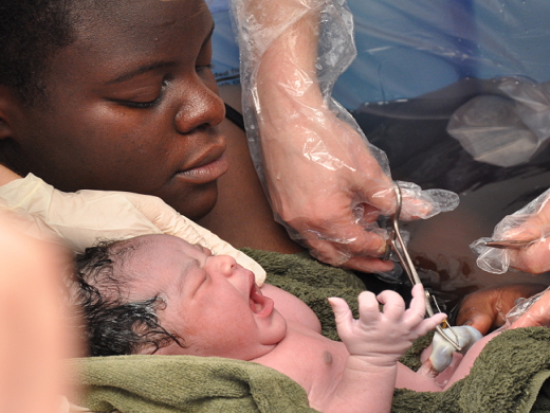 The Birth Center at PCC offers patients many natural options for pain relief. You will be surprised how effective seemingly simple things, like massage and movement, can help you cope. The best pain relief method is the one that works for you. Our supportive midwives and birth assistants will work with you to find what feels best. These are some common pain relief techniques available at the birth center.
The Birth Center at PCC offers patients many natural options for pain relief. You will be surprised how effective seemingly simple things, like massage and movement, can help you cope. The best pain relief method is the one that works for you. Our supportive midwives and birth assistants will work with you to find what feels best. These are some common pain relief techniques available at the birth center.
Water immersion
Each birthing suite has a deep tub available for you to use. Water immersion during labor relieves pain, helps relaxation, reduces pressure on the abdomen, and allows you to easily change positions. Many women like to deliver their babies in the tub as well. Each room also has a private shower that can be used in labor for pain relief.
Movement
Here at the birth center, you are able to walk around and labor in whatever position is comfortable. You may find that swaying, standing, kneeling, or lying on your side helps relieve pain. These positions also help the baby to come down through the birth canal. Only you know what is the most comfortable for you. Don’t be afraid to experiment with positions and move around as much as you want. We also have a birth ball and a squatting stool in each room to support you in whichever positions are comfortable. Some good ideas for comfortable positions can be found here.
Breathing and relaxation techniques
Steady, rhythmic breathing can help women work through contractions by promoting relaxation. Breathing techniques can also help reduce feelings of nausea and dizziness. You are welcome to bring your own aromatherapy oils to help with relaxation. You may also find music soothing and you are welcome to bring an iPod with you.
Massage
There are many ways that massage can help you cope with labor pain. You can gently massage your belly during contractions or you can have your partner or labor support person massage your back or feet. Your labor partner can also provide counter-pressure if your back or hips hurt during contractions. You may also find warm or cold compresses soothing on areas that hurt.
Can I get an epidural or narcotic pain medication at the birth center?
The Birth Center at PCC does not offer epidurals or narcotic pain relief. However, the majority of our patients find they do not need these to cope with pain. Feel free to experiment with pain coping techniques. Our midwives and birth assistants are here to help you find which techniques work the best for you and provide you with support and encouragement as you bring your baby into the world.
Birth Certificates
- Hits: 6897
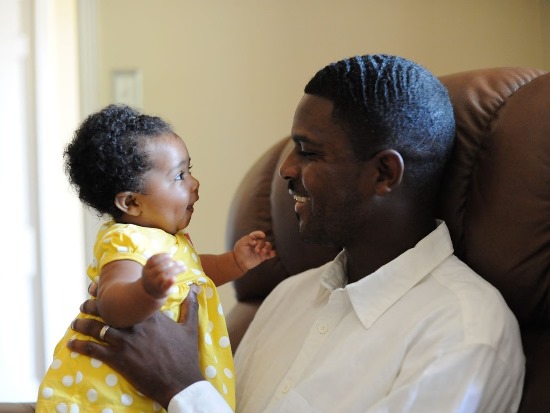 We realize the importance of naming your baby and we would like to assist you in making that process as easy as possible. Please observe the following:
We realize the importance of naming your baby and we would like to assist you in making that process as easy as possible. Please observe the following:
- A Birth Certificate Worksheet will be included in your birth center welcome packet. You can also print and fill it out. Please bring this form as complete as possible on the day of your birth. We will assist you in finishing the worksheet following the birth of your baby.
- If not married and the father of the baby desires to have his name on the birth certificate, he must be present during the completion of the worksheet to provide a signature. Also, a Voluntary Acknowledgement of Paternity (VAP) form must be completed and signed on the day of the birth or home visit.
- Read all documents carefully before signing. Once the worksheet has been signed, the information on the document will be transferred to the legal birth certificate.
- Request for changes on birth certificate (last names, name spellings, etc.) after 7 days of the baby’s birth will be handled by the State of Illinois Vital Records department (1-800-237-1945).
- In processing the legal birth certificate, a social security number will be applied for automatically unless specified differently by you. The social security card will be mailed to the address you provide on your worksheet in 8-12 weeks.
- The legal birth certificate can be ordered 1-2 weeks after the birth from the Cook County Clerk’s office. Birth certificates can be ordered in person, by mail, by phone, at a Currency Exchange, or online. Please visit www.cookcountyclerk.com for more information.


